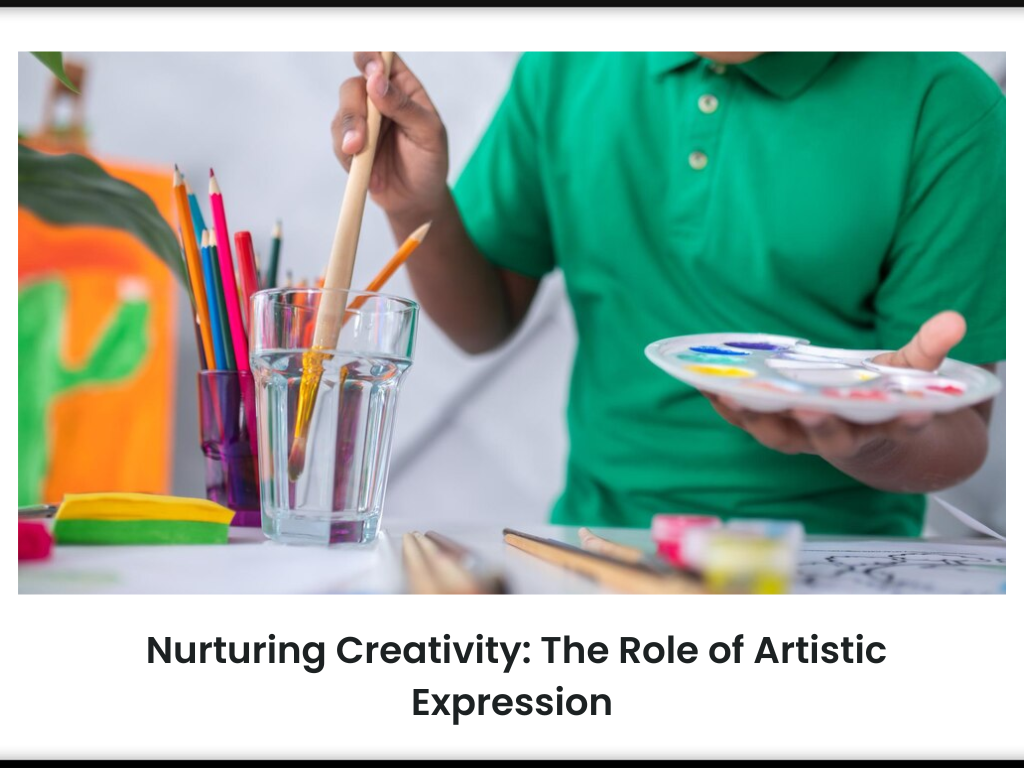In today’s rapidly changing world, creativity is increasingly recognized as a crucial skill for success. Artistic expression, encompassing visual arts, music, dance, theater, and creative writing, plays a vital role in nurturing creativity and fostering holistic development in students. In collaboration with TSGS, this article delves into the significance of artistic expression in education and its profound impact on students’ cognitive, emotional, and social growth.
Understanding Artistic Expression:
Artistic expression encompasses a diverse range of creative activities that allow individuals to communicate, explore, and express themselves through various art forms. Whether through painting, sculpting, playing an instrument, dancing, or writing poetry, artistic expression provides a means for self-expression, reflection, and communication of ideas and emotions. In the context of education, artistic expression serves as a powerful tool for fostering creativity, imagination, and self-discovery in students.
The Importance of Artistic Expression in Education:
Stimulating Creativity:
Artistic expression stimulates creativity by encouraging students to explore new ideas, experiment with different materials and techniques, and think outside the box. Through artistic endeavors, students learn to approach problems from multiple perspectives, embrace uncertainty, and innovate solutions. Engaging in creative activities fosters divergent thinking, imagination, and originality, essential skills for success in the 21st century.
Fostering Self-Expression:
Artistic expression provides a means for students to express themselves authentically, communicate their thoughts, feelings, and experiences, and develop a sense of identity and self-awareness. Through art, students explore their emotions, values, and beliefs, gaining insight into their inner world and external environment. Artistic expression fosters self-confidence, self-esteem, and resilience, empowering students to navigate challenges and setbacks with grace and resilience.
Enhancing Emotional Intelligence:
Artistic expression nurtures emotional intelligence by enabling students to recognize, understand, and regulate their emotions effectively. Through artistic endeavors, students learn to express and process complex emotions, such as joy, sadness, anger, and fear, in constructive ways. Engaging in creative activities promotes emotional resilience, empathy, and compassion, fostering positive relationships and social connections with others.
Promoting Critical Thinking:
Artistic expression encourages critical thinking by challenging students to analyze, interpret, and evaluate their own work and the work of others. Through art critique, students learn to articulate their opinions, make informed judgments, and appreciate diverse perspectives and artistic styles. Engaging in critical inquiry fosters intellectual curiosity, analytical thinking, and problem-solving skills, essential for academic and personal success.
The Role of The Star Global School in Nurturing Creativity:
TSGS recognizes the importance of artistic expression in education and integrates creative activities into its curriculum and extracurricular programs. Through a holistic approach to education, the school provides students with opportunities to explore and develop their artistic talents across various disciplines, including:
Visual Arts:
The school offers comprehensive visual arts programs that allow students to explore various mediums, techniques, and styles of artistic expression. Students engage in drawing, painting, sculpture, printmaking, and digital art, cultivating their creativity, observational skills, and aesthetic sensibilities. Art studios equipped with state-of-the-art facilities provide students with a conducive environment to experiment, create, and express themselves visually.
Performing Arts:
The school also offers a rich array of performing arts opportunities, including music, dance, theater, and drama. Students participate in music ensembles, dance performances, theatrical productions, and public speaking events, honing their performance skills, stage presence, and self-confidence. Performing arts programs provide students with a platform to showcase their talents, collaborate with peers, and connect with audiences, fostering a sense of community and belonging.
Literary Arts:
School encourages students to explore the literary arts through creative writing, poetry, storytelling, and journalism. Students engage in writing workshops, literary festivals, and publishing projects, developing their writing skills, voice, and storytelling abilities. Literary arts programs promote self-expression, critical thinking, and communication skills, empowering students to share their ideas and perspectives with the world.
Integration Across the Curriculum:
The school integrates artistic expression across the curriculum, recognizing its interdisciplinary nature and its potential to enhance learning in all subject areas. Teachers incorporate creative activities, such as visual aids, music, movement, and storytelling, into lessons to engage students, deepen understanding, and foster creativity. Integration across the curriculum promotes connections between different disciplines, encourages holistic learning, and inspires students to think creatively and critically about the world around them.
Conclusion:
Artistic expression plays a vital role in education, nurturing creativity, self-expression, and holistic development in students. Through visual arts, performing arts, literary arts, and integration across the curriculum, students at TSGS engage in creative activities that stimulate imagination, foster emotional intelligence, and promote critical thinking skills. By embracing artistic expression as an integral part of education, the school prepares students to become innovative thinkers, empathetic leaders, and lifelong learners who make meaningful contributions to society.


